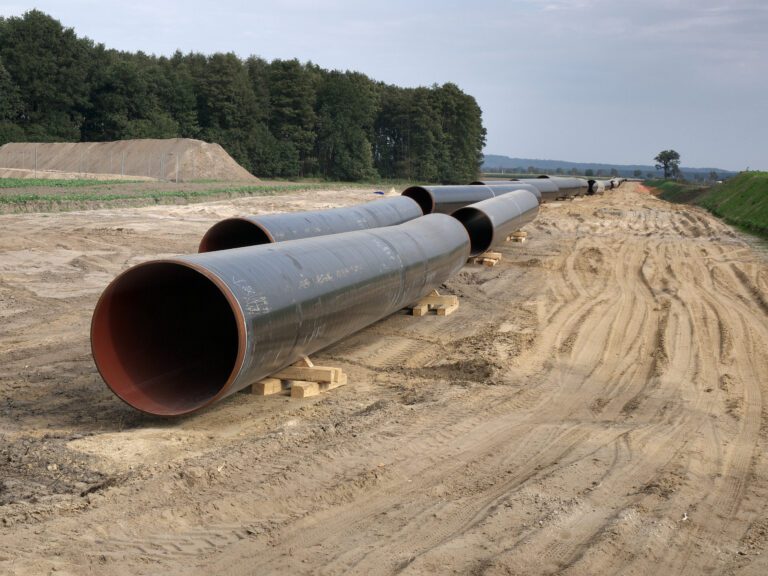
The need for CCUS
The Climate Change Committee (CCC), regards CCUS as a ‘necessity not an option’ to achieve the UK’s decarbonisation ambitions because it offers the only means to reduce carbon emissions in certain sectors – such as heavy manufacturing.
The CCC is not alone in this view, and UK Government has backed it by committing to capture a vast 10 million tonnes of carbon dioxide equivalent a year by 2030. That’s roughly the amount produced by a million UK homes.
With the processes and geology involved long understood by the fuels industry, it’s a technology for which the UK has advantages over international rivals. In particular, the North Sea basin, which reached its peak oil production almost 20 years ago, is now primed to play a new role in storing captured carbon where once we extracted oil and gas.
Some experts question whether CCUS is needed at all, saying it is an unproven technology. But we, in the fuels sector, strongly believe it will be required in ‘hard to decarbonise’ sectors. While the technology isn’t easy, it has been shown to work in projects around the world. There are two routes that we are confident can be used for its development on a large scale:
• Capturing and storing CO2 emissions from the UK’s hard to decarbonise industries such as heavy industry
• Producing low carbon hydrogen as a fuel source to power industry and transport
Capturing CO2 from the UK’s hard to decarbonise industries
Large industrial facilities such as power plants that use fossil fuels or biomass can be retrofitted to capture the CO2 they produce, if it is not going to be used elsewhere. The captured CO2 can be compressed and transported by pipeline, ship, rail, or truck to be used in a range of applications such as fizzy drinks – the ‘utilisation’ in CCUS – or injected into deep geological formations including depleted oil and gas reservoirs – the ‘storage’. These processes can be used to tackle emissions in hard-to-decarbonise sectors like cement, steel production from iron ore, and chemicals industries.
A carbon capture pilot started last year in the UK’s glass manufacturing industry with five more trials expected this year. This is a step forward in carbon capture technology which could see millions of tonnes of carbon captured in glass, cement and ‘waste to energy’ industries by 2030.
Hydrogen
Any discussion of carbon capture will quickly move to hydrogen which also has a large part to play in the UK’s net zero journey.
Low carbon hydrogen can be made using carbon capture in two main ways. When hydrogen is made from fossil fuels, carbon capture can be used to store the CO2 underground. And when hydrogen is produced from biological material, carbon capture can be used to remove carbon from the atmosphere creating negative emissions – so called Bioenergy with Carbon Capture, and Storage, or BECCS.
This “negative emissions” technology will be vital in helping to balance emissions from sectors that are not possible to fully decarbonise, with the UK’s flagship BECCS project being operated by Drax in the Humber region. Another emerging technology is Direct Air Capture (DAC) which directly takes CO2 from air. Twenty-seven DAC plants have been commissioned worldwide, mainly in the USA.
Additionally, captured CO2 can be reacted with low carbon hydrogen to create E-fuels. These ‘drop-in’ fuels can directly replace conventional fuels using existing infrastructure and are a promising alternative to fossil fuels in the transport sector – particularly for long distance shipping and aviation which cannot easily be powered by electric batteries.
The role of the fuels sector
The fuels sector, which includes the UK’s fuel refining, storage, transport and forecourts infrastructure, will be crucial to delivering the UK Government’s plans because:
• the sector brings knowledge of standards for the design, construction and operation of CCUS facilities from existing projects overseas
• the carbon capture technologies needed are similar to existing processes on refinery sites
• our members have the necessary understanding of UK geology
• member companies can be the anchor first customer for CCUS sites, to help fund their start-up and make them viable for other companies to use
What Government needs to do
For companies to invest in CCUS, investment conditions need to be attractive relative to other countries. This could be done by:
• including the refining sector in the Carbon Border Adjustment Mechanism (CBAM), to ensure importers face the same carbon costs as UK refiners
• UK Government providing a package of financial support for decarbonisation projects that matches those offered to projects in competitor countries
• creating a more stable policy and fiscal environment that gives investors confidence.
• the North Sea Transition Authority and other agencies helping the development of this new business by providing more clarity around the ownership of land and seabed assets, which have become barriers to securing suitable CCUS sites for projects, although we recognise recent work on the potential introduction of a carbon storage levy.
• delivering a review of shipping or trucking CCUS to storage sites. Not all carbon sources neighbour storage sites, so this needs to be brought forward so that areas further from the CCUS sites can use this method to deliver carbon reductions.
Without this action we risk falling behind and losing our global leadership in large-scale decarbonisation technologies like CCUS. But, if UK Government can deliver the right framework, then the fuels sector is ideally placed to help the UK create the CCUS infrastructure the UK needs to achieve net zero.
We will continue to work with Government to ensure the voice of the sector is understood so the UK can decarbonise with a thriving industrial sector still in place.
Image credit: Zero Carbon Humber

